3
Feb
The role of digital technology in dentistry and dental aesthetics: advantages and limitations
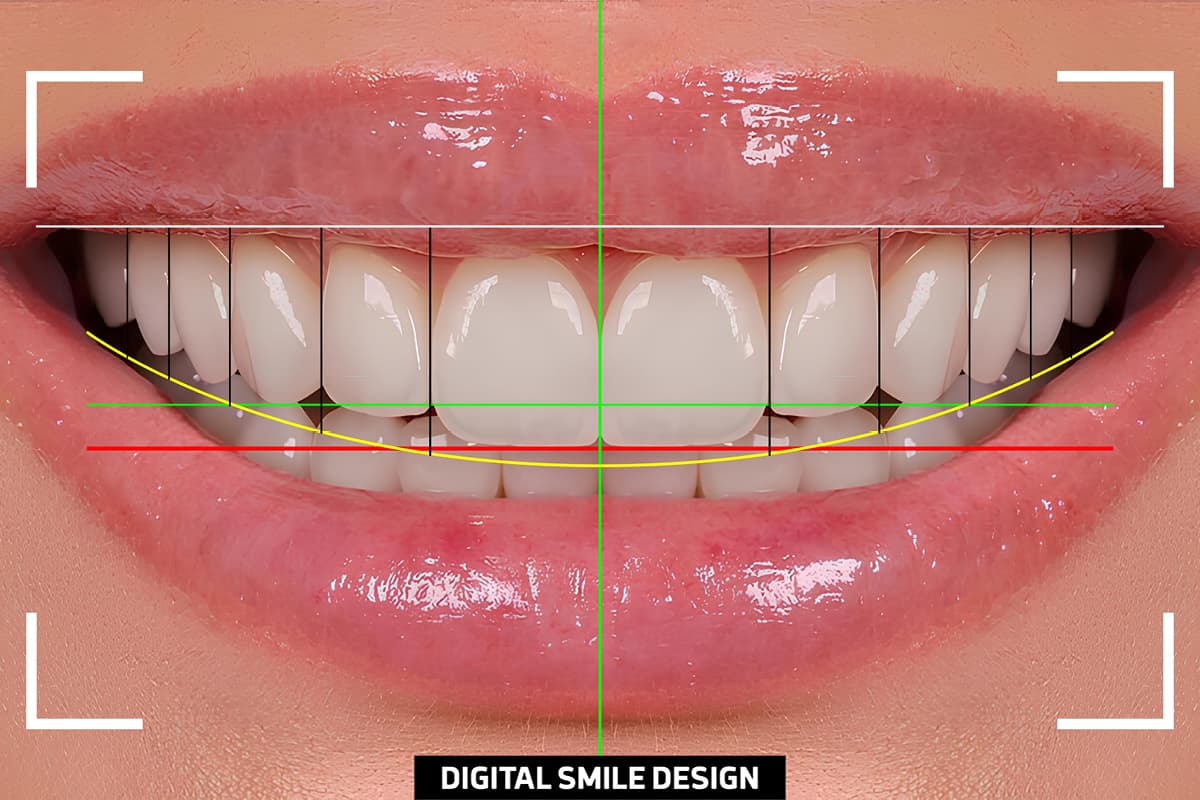
Digital dentistry is now a well-established reality that is progressively gaining more and more ground. (1). New technologies have opened the way to possibilities for dentists and patients that were unimaginable until recently. This was also possible thanks to the introduction of software for treatment simulations into the dental market, which the evolution of technologies available today have made increasingly realistic and engaging for the patient.(2)
Digital technologies for dental aesthetics
Tools such as Digital Smile Design (DSD) (3) or the Digital Smile System (4) help the clinician design an aesthetic pre-visualisation of the patient’s smile, addressing their concerns and motivating them towards the recommended treatment.(5) The patient can thus be involved in planning their future smile in harmony with their own style, can receive more detailed information on the treatment plan and at the same time discuss it with the dentist while looking at their own images and photographs.(6)
In 2017, Christian Coachman described the evolution of smile planning systems (7) starting from analogue drawings made on patient photographs without any connection to study models of the dental arches. Subsequently, the field moved on to two-dimensional digital plans, first with a visual connection to the analogue model using software such as Power Point or Keynote, then later to integration with the 3D model of the patient.
The three-dimensional digital workflow in dentistry
The advancement of digital technologies has then led to an increasingly three-dimensional workflow, which integrates facial and dental aesthetic parameters, allowing for ever greater integration between the virtual model of the patient and the patient’s facial photos or scans. In the latest generation (the sixth), the 4D concept introduces motion, adding dynamism to smile design for even more realistic and personalised pre-visualisation.(8)
The possibility of creating a mock-up as a step following the digital pre-visualisation of the patient’s final smile turns out to be an important aid for both the clinician and the patient, before proceeding with the rehabilitation. The mock-up can in fact be used for both aesthetic reasons and functional reasons; for example, to test a new VDO or a new occlusal pattern, evaluating its adaptation in the patient’s mouth once functionalised.(9)
The benefits of digital workflow in dentistry
The advantages that can be obtained from this workflow are truly remarkable and decisive in terms of treatment predictability.
- The digital analysis of facial, gingival and dental aesthetic parameters in the patient’s smile and face, previously impossible or very complex without such software, can now be performed in an objective and standardised way.(2)
- Personalisation of the smile design using photographs increases the patient’s participation in the treatment plan, making them, as already mentioned, more aware and therefore reinforcing acceptance of the treatment and satisfaction.(10)
- Digital preview of the smile improves not only communication between doctor and patient, but also between members of the dental team, as well as between doctor and dental technician.(3,4)
- Any person in the team capable of viewing and possibly digitally modifying the aesthetic smile project can access the file in the software and make the appropriate changes without having to be physically present and, at the same time, sharing what has been done with the other collaborators.
- The fact that patients can then view their rehabilitations before starting treatment can also have important medico-legal functions.(11)
Limitations and challenges of digital dentistry
However, despite these important advantages, there remain some limitations related to the software, tools used and workflows applied.
First, since diagnosis and treatment planning depend on photographic documentation, inadequate documentation can distort the reference image and lead to incorrect diagnosis and planning. (12)
For this reason, for photographic documentation several authors recommend using a reflex camera with an 85 to 105 mm lens in order to ensure a correct photo enlargement factor.(13,14)
Also the inclination of the patient’s head and the Frankfurt plane relative to the horizontal plane may not be correct during photography, potentially resulting in a subsequent alignment error between the 3D scans and the photo.(15)
The photograph in what is called the “natural head position” could still be affected by the possible retroclination or proclination of the maxillary arch. And it is not easy to obtain a photo in which the axis of the photographic lens is parallel to the patient’s Frankfurt plane, especially when treating elderly patients with spinal problems.
For a complete 3D digital workflow, up-to-date CAD/CAM software, intraoral scanners, 3D printers and/or milling machines are required, which makes the process expensive and not always sustainable.(16) It is also necessary to be able to manage and know how to use the software, in order to correctly align all the patient data, further increasing times and costs.(17)
In conclusion, digital technology has revolutionized dental aesthetics by offering realistic pre-visualisations and improving doctor-patient communication. However, proper 3D pre-visualisation requires advanced tools and accurate documentation, which can be a limitation.
References:
1. van Noort R. The future of dental devices is digital. Dent Mater. 2012 Jan;28(1):3–12.
2. Jafri Z, Ahmad N, Sawai M, Sultan N, Bhardwaj A. Digital Smile Design-An innovative tool in aesthetic dentistry. Journal of Oral Biology and Craniofacial Research [Internet]. 2020 Apr 1 [cited 2024 Oct 27];10(2):194–8. Available from: https://www.sciencedirect.com/science/article/pii/S2212426820300427
3. Stanley M, Paz AG, Miguel I, Coachman C. Fully digital workflow, integrating dental scan, smile design and CAD-CAM: case report. BMC Oral Health. 2018 Aug 7;18(1):134.
4. Sanchez-Lara A, Chochlidakis KM, Lampraki E, Molinelli R, Molinelli F, Ercoli C. Comprehensive digital approach with the Digital Smile System: A clinical report. The Journal of Prosthetic Dentistry [Internet]. 2019 Jun 1 [cited 2024 Oct 27];121(6):871–5. Available from: https://www.sciencedirect.com/science/article/pii/S0022391318310096
5. Jain A, Bhushan P, Mahato M, Solanki BB, Dutta D, Hota S, et al. The Recent Use, Patient Satisfaction, and Advancement in Digital Smile Designing: A Systematic Review. Cureus [Internet]. 2024 Jun 16 [cited 2024 Oct 27]; Available from: https://www.cureus.com/articles/258233-the-recent-use-patient-satisfaction-and-advancement-in-digital-smile-designing-a-systematic-review
6. Ortensi L, Ortensi M, Minghelli A, Grande F. Implant-Supported Prosthetic Therapy of an Edentulous Patient: Clinical and Technical Aspects. Prosthesis [Internet]. 2020 Jul 1 [cited 2020 Sep 20];2(3):140–52. Available from: https://www.mdpi.com/2673-1592/2/3/13
7. Digital Smile Design [Internet]. [cited 2024 Oct 27]. Discover the Evolution of Smile Design Techniques: A Comprehensive…. Available from: https://digitalsmiledesign.com/learning-hub/smile-design-evolution
8. Lepidi L, Kim BC, Giberti L, Suriano C, Li J, Grande F. The 4D virtual patient: A proof of concept in digital dentistry. J Prosthet Dent. 2024 Apr 13;S0022-3913(24)00194-X.
9. Garcia PP, da Costa RG, Calgaro M, Ritter AV, Correr GM, da Cunha LF, et al. Digital smile design and mock-up technique for esthetic treatment planning with porcelain laminate veneers. J Conserv Dent. 2018;21(4):455–8.
10. Coachman C, Yoshinaga L, Calamita M, Sesma N. Digital smile design concepts. The Technologist. 2014;
11. Cervino G, Fiorillo L, Arzukanyan AV, Spagnuolo G, Cicciù M. Dental Restorative Digital Workflow: Digital Smile Design from Aesthetic to Function. Dentistry Journal [Internet]. 2019 Jun [cited 2024 Oct 27];7(2):30. Available from: https://www.mdpi.com/2304-6767/7/2/30
12. Zanardi PR, Laia Rocha Zanardi R, Chaib Stegun R, Sesma N, Costa B no, Cruz Laganá D. The Use of the Digital Smile Design Concept as an Auxiliary Tool in Aesthetic Rehabilitation: A Case Report. [cited 2024 Oct 27]; Available from: https://opendentistryjournal.com/VOLUME/10/PAGE/28/
13. Ortensi L, Fisichella ML, Ortensi M, Grande F, Pellegrino G, Ferri A, et al. A comparison of accuracy between three different facial detection systems for prosthodontic esthetic preview: a single-blinded in vitro study. Minerva Dent Oral Sc [Internet]. 2021 Sep [cited 2022 Apr 13]; Available from: https://www.minervamedica.it/index2.php?show=R18Y9999N00A21092101
14. Ortensi L, Sigari G, La Rosa GRM, Ferri A, Grande F, Pedullà E. Digital planning of composite customized veneers using Digital Smile Design: Evaluation of its accuracy and manufacturing. Clinical & Exp Dental Res [Internet]. 2022 Apr [cited 2022 Apr 13];cre2.570. Available from: https://onlinelibrary.wiley.com/doi/10.1002/cre2.570
15. Chiu CS, Clark RK. Reproducibility of natural head position. J Dent. 1991 Apr;19(2):130–1.
16. Haidar ZS. Digital Dentistry: Past, Present, and Future. Digital Medicine and Healthcare Technology [Internet]. 2023 Jun 6 [cited 2024 Oct 27];(16). Available from: https://www.intechopen.com/journals/4/articles/220
17. Meereis C, De Souza G, Albino L, Ogliari F, Piva E, Lima G. Digital Smile Design for Computer-assisted Esthetic Rehabilitation: Two-year Follow-up. Operative Dentistry [Internet]. 2016 Jan 1 [cited 2024 Oct 27];41(1):E13–22. Available from: https://meridian.allenpress.com/operative-dentistry/article/41/1/E13/108021/Digital-Smile-Design-for-Computerassisted-Esthetic
Would you like more information about Zhermack Dental products and solutions?
Contact us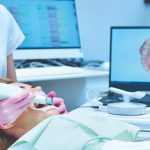
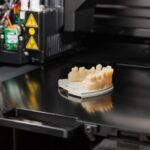
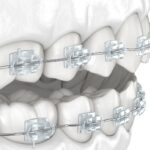
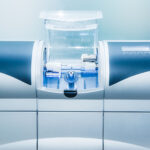

 Zhermack SpA has been one of the most important producers and international distributors of alginates, gypsums and silicone compounds for the dental sector for over 40 years. It has also developed solutions for the industrial and wellbeing sectors.
Zhermack SpA - Via Bovazecchino, 100 - 45021 Badia Polesine (RO), Italy.
Zhermack SpA has been one of the most important producers and international distributors of alginates, gypsums and silicone compounds for the dental sector for over 40 years. It has also developed solutions for the industrial and wellbeing sectors.
Zhermack SpA - Via Bovazecchino, 100 - 45021 Badia Polesine (RO), Italy.


